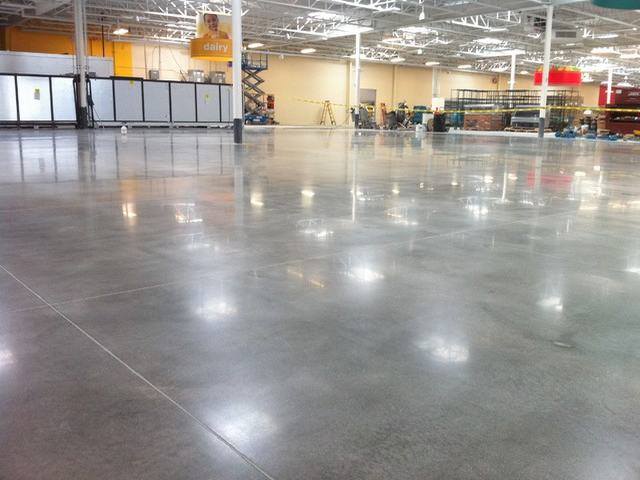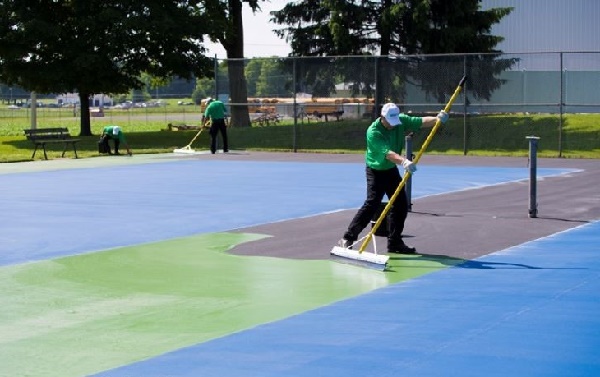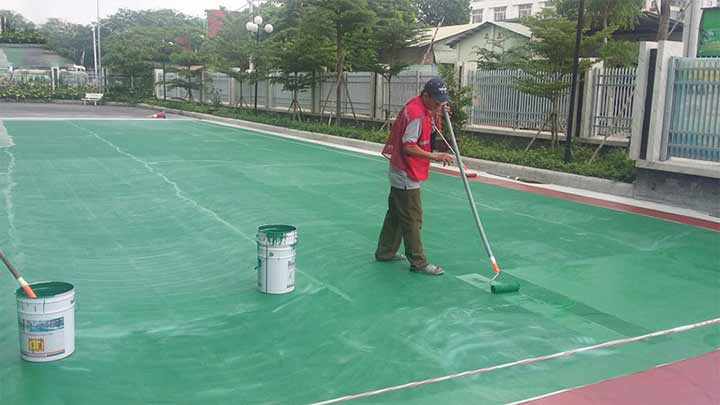Causes of injuries when playing badminton
27 Feb, 2023Causes of injuries when playing badminton
05 Jan, 2023 - badminton
Types of badminton court surfaces commonly encountered in practice and competition
The types of badminton court surfaces commonly encountered in practice and competition today are quite diverse. Each type of surface has different advantages and disadvantages. Let's take a look at some of the outstanding badminton court surfaces that have been found in most of the arenas lately.
1. Types of badminton court surfaces commonly encountered in practice and competition
1.1. The surface is made of PVC mat
At the top of the list of the most popular badminton court surfaces today, the surface is made of PVC carpet. This is the type of carpet used in most professional courts.
To produce a badminton court surface with PVC carpet, the manufacturer will attach 3 layers of materials including the surface layer, the lining and the base. With easy-to-find materials, this material is used to replace many other expensive materials.
The advantage of this type of surface is that it has high durability, little wear and tear, and is cheap, so it is suitable for a lot of playing field space.
1.2. Badminton court surface is made of Silicon PU
Like the badminton court with PVC carpet surface, Silicon PU material also has the same features. However, they are not appreciated for their ability to absorb heat.
In terms of features, the surface of Silicon PU has the ability to withstand sharpness and effectively resist abrasion. They are also designed with many eye-catching colors, helping to increase the aesthetics of the playing field.

1.3. The surface of the badminton court with acrylic paint
For badminton court surface, acrylic paint is used mainly at outdoor badminton courts. Here, the cement surface is often used to make the playing field. This is a fairly hard, solid surface, so for those who often compete, it will cause unnecessary injuries.

1.4. Indoor wooden badminton court surface
Nowadays, at some indoor badminton courts, you will find wooden surfaces which are also quite common. They provide good bounce and good slip resistance to the playing field. However, the surface made of wood also has the disadvantage that sometimes it will be sticky with the player's sweat, so there is a slippery phenomenon.
2. Badminton court surface construction process
To get a quality badminton court surface, the construction unit needs to go through strict construction processes with quality and genuine paint lines. Let's take a look at some steps of the badminton court surface construction process as follows:
Step 1: Prepare a flat surface for construction
First, you need to treat the construction surface to create a flat surface with basic roughness for effective paint adhesion. For rough primitive surfaces, you can rely on the help of industrial grinders. For cracked, punctured surfaces, you should use similar materials to seal and smooth the surface.
The result of this process is a flat, dust-free badminton court surface that still has a certain roughness.

Step 2: Paint a layer of waterproof paint
Next, when you have prepared a dry, dust-free surface, you apply a layer of waterproof paint to increase water resistance and adhesion for the following paint layers of the badminton court. Depending on the investor's budget, you can paint 1 or 2 layers of waterproof paint to ensure the surface of the badminton court has more optimal features.
Step 3: Create a buffer for the badminton court
This is the stage to make the playing field have a flat surface with better adhesion. Hence. Creates a good base layer to increase the color fastness of the final paint coating.
Step 4: Paint the top coat for the badminton court
To create smoothness, flatness and aesthetics for the badminton court, usually the construction unit will cover from 2 to 3 layers of color coating. Each paint coating will be spaced about 4 to 6 hours apart to create a finished friction paint surface.

Step 5: Draw a line for the badminton court
For the markings on the badminton court, the World Badminton Federation provides common standards. Therefore, when drawing lines, the construction unit needs to align accurately and meticulously.
Above is information about the types of badminton court surfaces commonly encountered in practice and competition that Thien Long Sports Equipment wants to share with customers. Recognizing the types of surfaces when playing will help you choose the right material for your sports activity. If you still have any questions, please contact Thien Long Sports immediately for more specific advice.